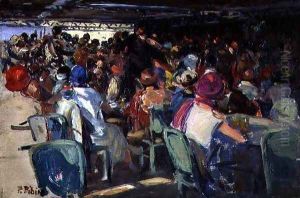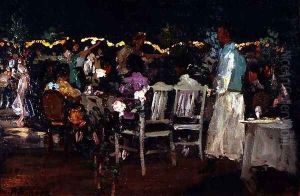Pedro Ribera Paintings
Pedro de Ribera was a Spanish architect who was a leading figure in the Spanish Baroque architectural movement, particularly within the region of Madrid. Born in Madrid in 1681, Ribera was a disciple of José Benito de Churriguera, who is credited with developing the highly decorative Churrigueresque style of Spanish Baroque architecture.
Ribera's work is characterized by its exuberant ornamentation and dramatic forms, hallmarks of the Churrigueresque style. He became the Royal Architect in 1725, under the reign of King Philip V, the first Bourbon king of Spain. This appointment allowed him to play a significant role in shaping the urban landscape of Madrid during a period of intense construction and transformation.
Among Ribera's most notable works is the Cuartel del Conde-Duque, which was built as a barracks and royal palace and is now a cultural center. He also designed the Bridge of Toledo, a baroque bridge crossing the Manzanares River in Madrid, which still stands as a testament to his vision. Another significant work is the church of San Cayetano, which showcases his signature style with its ornate façade and dramatic use of architectural elements.
Ribera was not only an architect but also involved in urban planning. He contributed to the expansion of Madrid and the design of new streets and squares, which was part of a broader effort to modernize the city and solidify its status as the capital of Spain.
Pedro de Ribera died in 1742, leaving behind a legacy of influential works that continue to be celebrated for their artistic and historical significance. His contribution to the Baroque architecture of Spain remains a significant chapter in the history of European art and architecture.


